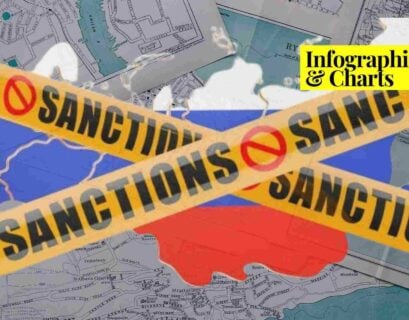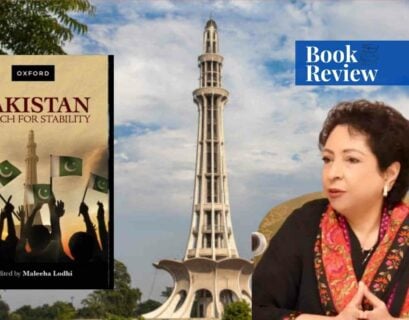Ms Zainab Haseeb is studying IR at Kinnaird College for Women, Lahore. She has previously participated in WWF's eco-internship.
Introduction
The International community is accustomed to many challenges of the 21st century. One of these challenges includes the nuclear reality of the states. Though the idea of nuclear weapons was introduced in the mid of 20th century near the second world war, it remained an important mystery for the world to figure out whether the acquisition of nuclear weapons can put an end to all wars in the world or could become the source of its ultimate end.
Observing the effects of the American nuclear attack on Japan, a number of states including the United States of America moved on to introducing the idea of nuclear non-proliferation. For the US, this call for non-proliferation was motivated by one factor which is that of preventing the rise of a nuclear rival. For that, it guaranteed a nuclear umbrella to many of its allies to keep them from making their own weapons of mass destruction and remain the sole holder.
However, not all states could potentially become US allies and embarked on a nuclear journey of their own. The nuclear ambitions of the state in every region led to the creation of security threats and states began to look towards the US for protection. An example of such security commitment is that of the Washington Declaration between South Korea and the US.
Reinstatement of Security Commitments
The Washington Declaration itself is a mutual defense treaty between South Korea and the US, and the primary purpose of this treaty is a revised commitment towards peace and stability of the Indo-Pacific region by taking measures to expand upon the goal. The declaration defines new steps that could boost the Ulchi Freedom Shield, the term for the US-South Korean joint military exercises, as well as information sharing between both states to ensure consistent surveillance of the region and timely indication of any attack from hostile neighbors.
The Washington Declaration has introduced the establishment of a Nuclear Consultative Group (NCG), which would provide South Korea with information on US initiatives and hence grant it a voice to sound its opinions over the defense efforts of the superpower to ensure they are compatible with the state and region.
Moreover, the declaration also highlights the idea of regular deployment of nuclear-armed ballistic missile submarines in South Korea. This is something that was halted in 1980 but has resumed in recent dialogues due to the increasingly hostile behaviour of Kim Jong Un of North Korea. There still are some weaknesses in the US-South Korean defense bond which could prompt the South Korean regime to move towards independent solutions. Nevertheless, the Washington Declaration remains an important exchange that has set important goals for both states.
The alliance aims to enable a joint effort by both states to plan and execute strategies for the conventional support of South Korea towards US nuclear operations. Moreover, improved exercises and training activities are to remain part of the nuclear deterrence that is to be maintained in the Korean Peninsula. Hence the alliance stands as a bilateral affair and a tabletop simulation for solidifying the joint approach of the nations for nuclear contingencies.
Nuclear Umbrella
As the current superpower, the US offers extended deterrence to different East Asian and European actors which grants it a major control and surveillance of the nuclear aims of these nations. The Nuclear Consultation Group (NCG) mentioned before is built on a similar pattern to the NATO Nuclear Planning Group. However, the aspect of forward-deployed nuclear weapons is not a part of NCG. The US would enhance its abilities further by enhancing its visibility of the strategic asset deployments along the Korean Peninsula.
The bilateral nature of the US-South Korea Washington Declaration has put some responsibility on the Korean end as well. That would be the continued commitment to eliminating any intent of putting together a domestic nuclear weapons program. South Korea has already signed the Non-Proliferation Treaty (NPT) and is likely to not pursue aims that could dismantle its narrative. The declaration hence stands as a reinforcement of both American and South Korean understanding of mutual security.
Deterring Hostile Actors in East Asia
There have been concerns on both sides regarding the increasing military advancements by North Korea. In recent years, Pyongyang has been developing tactical nuclear weapons to refine its long-range weapons that can reach the US mainland. Another threat in the East Asian periphery is that of China. South Korean President Yoon Suk Yeol and President Joe Biden discussed the tensions that were being raised due to Chinese military activities in the South China Sea.
The China-Taiwan tensions were also a part of the discussion as it presents a major East Asian threat. Both presidents expressed their willingness for promoting peace in the Taiwan Strait and clarified how they oppose any unilateral attempts of the Chinese regime to change the status quo in the Indo-Pacific region. These attempts mainly include unlawful maritime claims in the South China Sea and the militarization of the islands in the sea.
Conclusion
The Washington Declaration was also a source of keeping a check on South Korean nuclear aims. Though the anti-nuclear weapons sentiment is quite prevalent in the state, it tends to reduce in times when there is agitation with the neighbor.
There have been people like Dr Cheong Seong Chang who have supported the idea of nuclearization and have criticized the nation’s increasing reliance on the US. In order to keep such views in check and keep the public sentiment in favor of the nuclear non-proliferation narrative, the US and South Korea needed to undertake such an exercise in order to avoid the commencement of debate regarding the nuclear choices of the state.
Conclusion
The Washington Declaration seems to be a successful initiative that has revised both the US and South Korea’s old commitments. It has reaffirmed the position of not just the United States of America to remain aware of the East Asian needs but also of South Korea to always reject any kind of nuclear posture. Both states have solidified their previously designated roles and aim to see this as a joint exercise focused on the mutual security of their regional and extra-regional security interests.
If you want to submit your articles, research papers, and book reviews, please check the Submissions page.
The views and opinions expressed in this article/paper are the author’s own and do not necessarily reflect the editorial position of Paradigm Shift.



















